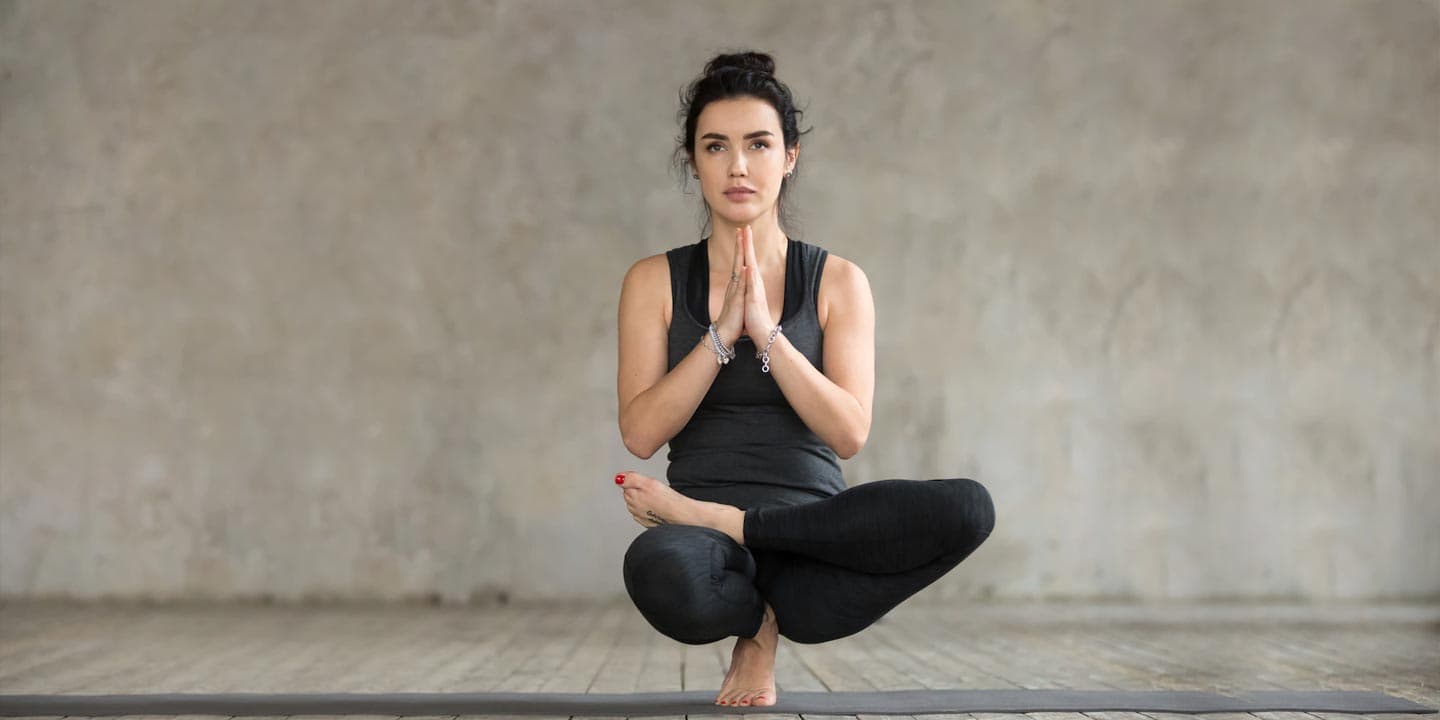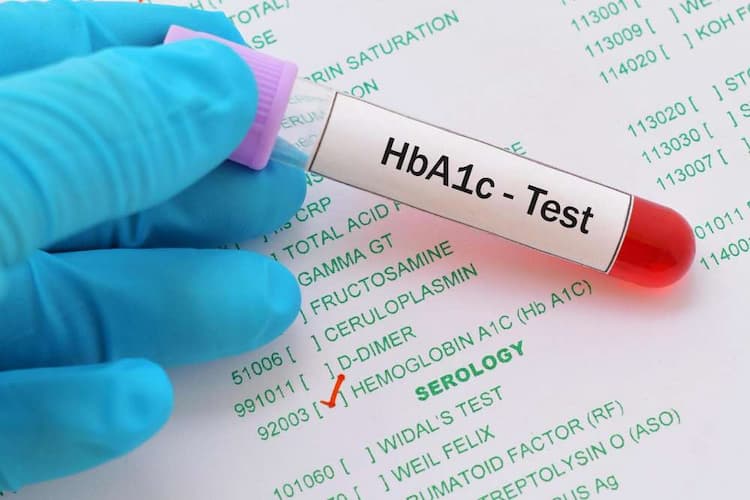11 Yoga asanas that will help you manage diabetes.

Medically Reviewed By
Dr. Ragiinii Sharma
Written By Prekshi Garg
on Oct 27, 2022
Last Edit Made By Prekshi Garg
on Mar 18, 2024

Diabetes management, especially for type-2 diabetes, heavily relies on your choice of lifestyle. From the kind of food, you are eating to the level of activity you include in your daily routine, there is a lot that plays a role in diabetes management.
Even studies suggest that diabetes patients can benefit majorly by leading a more active lifestyle and integrating different types of exercises that support one’s physical and mental health simultaneously.
Yoga is one of the pivotal activities that are considered safe for every diabetic patient, irrespective of their age or current state of health. Not just physically, yoga has the potential to support your mental well-being as well, enabling you to lead a more mindful life.
This article will explore the best practices of yoga for diabetes that you can introduce into your lifestyle for managing the symptoms better.
Why is Yoga Beneficial for Diabetes Patients?
Type-2 diabetes is primarily a lifestyle disorder, one that gets worse with the increase of insulin resistance in the body.
If you are diagnosed with diabetes, be assured that your doctor’s first aim is to reduce or prevent the impacts of insulin resistance in the body. Indulging in physical activities like yoga and exercising improves the body’s insulin sensitivity, thereby improving the cell’s efficacy to metabolize blood glucose into energy.
Hence, yoga asanas for diabetes management aren’t folklore but a scientifically proven fact that can help you get into remission and better manage the symptoms.
What are the Best Yoga Asanas for Diabetes?
With a basic understanding of the importance of yoga for diabetes, let us move on to the list of the best yoga asanas you should integrate into your daily practice.
1. Sun Salutations (Surya Namaskar)

Targets – Open hamstrings, chest muscles, and shoulders.
Benefits – Improve blood sugar levels, blood circulation, and insulin sensitivity in the body.
How to do it?
- Stand with your back straight in front of the yoga mat. Keep your abdomen taut and firm in place, while inhaling deeply and joining your palms.
- Gradually raise your hands and stretch them into your backside.
- As you exhale, step forward while lengthening your spine. Look down while doing so and relax your neck in the process.
- As you inhale again, place your right leg back to ensure that your right knee is touching the ground.
- Meanwhile, keep your left knee at a 90-degree angle. Keep your palms laying flat on the ground.
- Keep your gaze straight ahead and hold your breath for a few seconds.
- Gently take your left leg back until you reach a plank position on the ground.
- As you exhale, lower your body slowly so your knees, chest, and chin are touching the ground.
- As you inhale, lift your upper body as you lift your gaze upwards towards the ceiling.
- Exhale as you lift yourself back up and get yourself into the inverted-V pose.
- Move your right left forward, keeping your breathing steady.
- As you bring your left leg in the front, exhale deeply.
- Slowly bend down and then touch your toes, and then place your palms flat on the ground.
- As you inhale, again raise your hands and stretch your back as you join your palms on top of your head.
- Repeat the entire process 5-10 times.
2. Legs-Up-the-Wall Pose

Targets – Hamstrings, Pelvic muscles, Lower back, Front torso
Benefits – Relaxes the muscles and reduces the stress levels in the body. Manage and regulate your blood pressure and blood glucose levels.
How to do it?
- Place a towel or yoga mat against a wall
- Lay down on the mat, ensuring that your right side is against the wall.
- Slowly bring your legs up against the wall, swinging them to form a 90-degree angle against the wall.
- Keep your arms on either side of your torso, ensuring the palms are facing up.
- While swinging your legs, ensure that you relax your throat, chin, and neck and breathe in and out with each movement.
- You can continue swinging the legs against the wall for 5 minutes.
- Once done, slowly bring your legs back on the mat.
3. Seat Forward Bend

Targets – Pelvic muscles, Erector spinae, Gastrocnemius
Benefits – Lowers blood pressure, supports weight loss, and relieves anxiety and muscle stiffness.
How to do it?
- Sit on top of a yoga mat, keeping your legs spread in front of you.
- If you have knee pain, keep support underneath your knees.
- While you hinge at your hips, bring your arms and bend from your hips to touch your toes.
- You have to bend enough so that your torso folds into the legs.
- Hold this position for 1-3 minutes.
- Don’t overexert and only stretch and fold your upper body as much as you can without hurting yourself.
4. Reclining Bound Angle Pose

Targets – Groin muscles, pelvic muscles, adductors
Benefits – Calm your nervous system, regulate blood pressure and blood sugar levels
How to do it?
- Lay out a yoga mat on the ground and sit on it. This is one of the best restorative yoga asanas for diabetes.
- Once seated, bring the soles of your feet closer so they are touching, while your knee is bent outwards.
- Gradually lean backward, until your back touches the surface of the yoga mat. If you can’t find good support, ask someone to help you.
- Relax and breathe deeply as you do this. Also, keep your palms on either side of your torso, palms facing up.
- As you relax your hips, press down on the thighs to exert more stretch to the muscles.
- Hold this position for 5-10 minutes.
- Gradually detach your soles and relax your legs as you return to the initial position.
5. Supported shoulder stand

Targets – Rectus abdominis, rotator cuff, quadriceps
Benefits – Improve blood circulation, stimulate thyroid function, relieve stress, and improve insulin sensitivity.
How to do it?
- This is great yoga for sugar patients but is quite an advanced yoga pose too. If you can’t do it alone, keep someone on the side to help you.
- Start by laying out a yoga mat and lying down on it. You can place some folded towels under your shoulder for cushioning and support.
- Keep your palms on either side of your torso, keeping the palms facing down.
- Gradually lift both of your legs in the air and bring them back towards your head.
- You can hold out your palm underneath your hip for support.
- You have to lift your legs enough so that the shoulder, hip, and spine are in alignment.
- Hold this pose for 30 seconds.
- Bring your leg back down and into your initial position.
[embed] https://www.youtube.com/watch?v=a7KLQ1oCvNs [/embed]
6. Upward-Facing Dog

Targets – Gluteus maximus, triceps brachii, quadriceps, hamstrings, etc.
Benefits – Lower blood pressure, regular blood glucose, support weight loss, and stimulate the abdominal organs.
How to do it?
- Place a yoga mat on the ground and lie down on it on your chest.
- Keep your body in a straight line while placing your palms flat on the floor.
- You need to keep your forearms at a 90-degree angle against the floor.
- Put pressure on the palms and straighten to lift your upper body off the floor.
- Hold this position while lifting your head up and looking straight in front.
- Keep your throat and neck relaxed while keeping the shoulder and buttocks taut.
- Hold this position for 20-30 seconds and lower yourself back on the floor.
7. Plow pose

Targets – Hamstrings, Spinal extensors, rotator cuff
Benefits – Improve blood circulation, stimulate thyroid function, regulate blood glucose levels, reduce stress, relieve headache, and improve insomnia symptoms.
How to do it?
- To do this yoga for type 1 diabetes (and type 2 as well), start by laying down a yoga mat or folded towel.
- Start by doing a shoulder stand while gradually moving your feet above the head.
- Shift your hands to your hips to support your stance.
- Stay in that position for up to 1 minute.
- Once done, roll your spine and gradually bring your legs back down to the original position.
8. Bow Pose

Targets – Hamstrings, quadriceps, pectoralis major
Benefits – Stimulates the abdominal organs, improves blood glucose levels, relieves pulmonary complications, and relieves constipation.
How to do it?
- On the yoga mat on the floor, lie down on your stomach, keeping your palms on either side of your torso, facing up.
- As you bend your knees, move your hands to hold on to the outside of your ankles.
- Gradually lift your head, chest, and knees while looking forward.
- Practice deep breathing during that process.
- Hold this position for 30 seconds.
- As you exhale, release the pose.
9. Supine spinal twist

Targets – Erector spinae, trapezius, rectus abdominis
Benefits – Stimulate abdominal organs, lower blood sugar levels, and relieve stiffness in the back.
How to do it?
- Start by laying down flat on your back on top of a yoga mat or a folded towel.
- Gradually bring both of your knees towards your chest. Don’t overexert and only stretch as much as you can.
- Extend your hands so they lie in a straight line, keeping your palms facing up.
- Bring both of your joined and bent knees to the left side while turning your head towards the right.
- Do the same on the right side while turning your head towards the left.
- Hold the twisted position on either side for 30 seconds before switching.
10. Child’s Pose

Targets – Gluteus maximus, rotator muscles, hamstrings, spinal extensors
Benefits – Promotes muscle relaxation, relieves neck pain, and sensitizes the beta cell function in the pancreas.
How to do it?
- Lay out a yoga mat and get on it on your knees, ensuring to place your knees hip-width apart.
- Move back slightly so your buttocks are touching your heels.
- If you have knee pain or discomfort, place a cushion or pillow for support.
- Bend your upper body and slightly lean forward to touch your forehead on the floor.
- Bring your arms in front of you and extend them to feel a slight stretch around the shoulders and armpits.
- As you breathe in and out, stay in that position for a maximum of 5 minutes.
- Once done, lift yourself up slowly and exhale.
11. Corpse Pose (Shav Aasana)

Targets – Back muscles
Benefits – Lower blood pressure, regular blood glucose, relieve fatigue and insomnia.
How to do it?
- When curating your yoga for type-2 diabetes, always include the corpse pose to complete the yoga routine.
- Lay down flat on your back on the yoga mat.
- Keep your legs a little spread out, wider than your hip-width.
- Keep your arms resting and relaxing on either side of your torso, palms facing towards the ceiling.
- Maintain a straight positioning of your torso, so it forms a “Y” shape.
- Press your body to the floor while you relax and feel the tension relieving from your body.
- Stay in this position for 10-20 minutes.
How often Should I do Yoga for Diabetes?
When it comes to discussing more yoga for preventing diabetes, the two recurring questions are, “How often should I do it?” and “Does it really work?”
To answer your question, yoga definitely has a multitude of benefits in diabetes management. It relieves stress levels, regulates blood glucose in the body, and also improves insulin sensitivity and metabolism in the patient.
If you are having a hard time regulating your blood glucose levels, despite being on oral medications or insulin therapy, introducing this minor lifestyle switch can make a lot of difference.
As for how often or how long you should do yoga for diabetes, it depends on your endurance. Listen to your body and only push yourself to your maximum level. There is no reason to overexert yourself.
FAQs
1. Should I do yoga every day for diabetes?
Doing yoga every day can be extremely beneficial in your diabetes management journey. Just ensure that you are doing relevant poses that will support and optimize your health, instead of making things wose for you.
2. Can I do yoga with knee pain?
If you have knee pain, avoid yoga poses that put pressure on the knees because that might exacerbate your ailment.
3. Do I need a trainer for doing yoga for diabetes?
If you are completely new to doing yoga and don’t have much idea about the different yoga poses, we’d recommend that you start your journey with a trainer.
Conclusion
Diabetes is a progressive and global concern that affects over 400 million people globally. If you are diagnosed with the condition, it's time you focus on including alternative therapies like yoga to manage and regulate the blood sugar levels in the body.
Leave a comment
4 Comments
P. Narayanaswamy Naidu
Nov 1, 2022 at 3:41 AM.
Very good information of Yoga for the cure of Type-2 Diabetes. Regular practice of these yoga asanas will certainly cure diabetes. And also maintain general fitness of the body.
Myhealth Team
Nov 3, 2022 at 7:06 AM.
Thank you Mr. Naidu for your appreciation. We would keep coming up with more information and content for better health management for diabetes and other major health conditions.
Ram bdr Sunuwar
Oct 28, 2022 at 2:12 PM.
I would like to do yoga with train person Can I join on line?
Myhealth Team
Oct 29, 2022 at 8:50 AM.
You may join our community https://redcliffelabs.com/health-community/ for more video content on yoga. Thank you for sharing your enquiry.
Sanjeev Aladhi
Oct 27, 2022 at 2:30 PM.
Please show or display suggested yogasanas postures for easy to readers for practice the suggested yogasanas postures......Thanking you good article now days.....
Admin
Oct 28, 2022 at 6:27 AM.
Thank you for the feedback. we are upgrading the current article with image and video link. I am sharing a link of a video: yoga for diabetes from our redcliffe you tube channel. https://www.youtube.com/watch?v=a7KLQ1oCvNs. you may visit our you tube channel https://www.youtube.com/c/RedcliffeLabs_/videos and find associated yoga content there as well.
Srinivas
Oct 27, 2022 at 2:16 PM.
Pictures would have helped more



